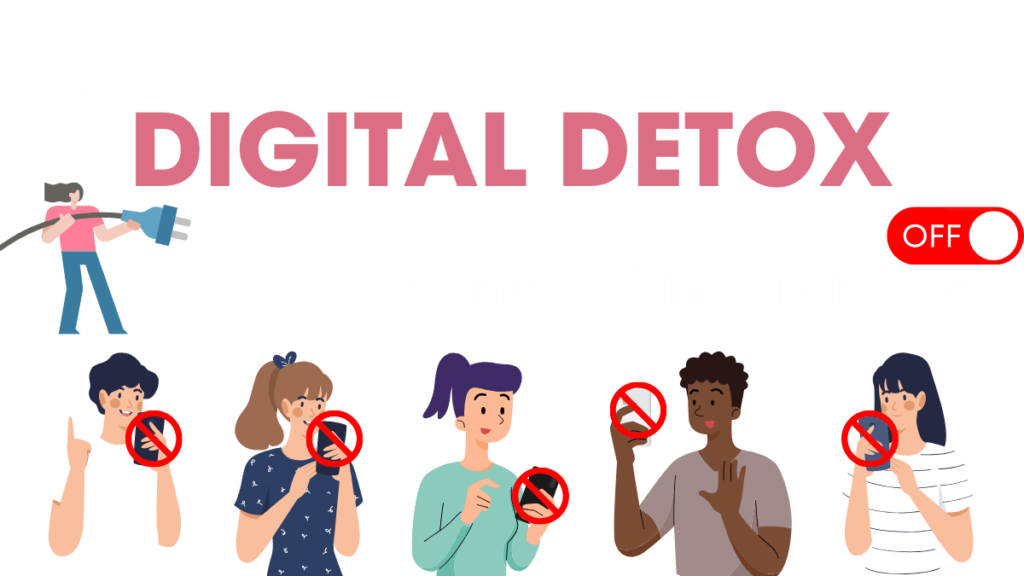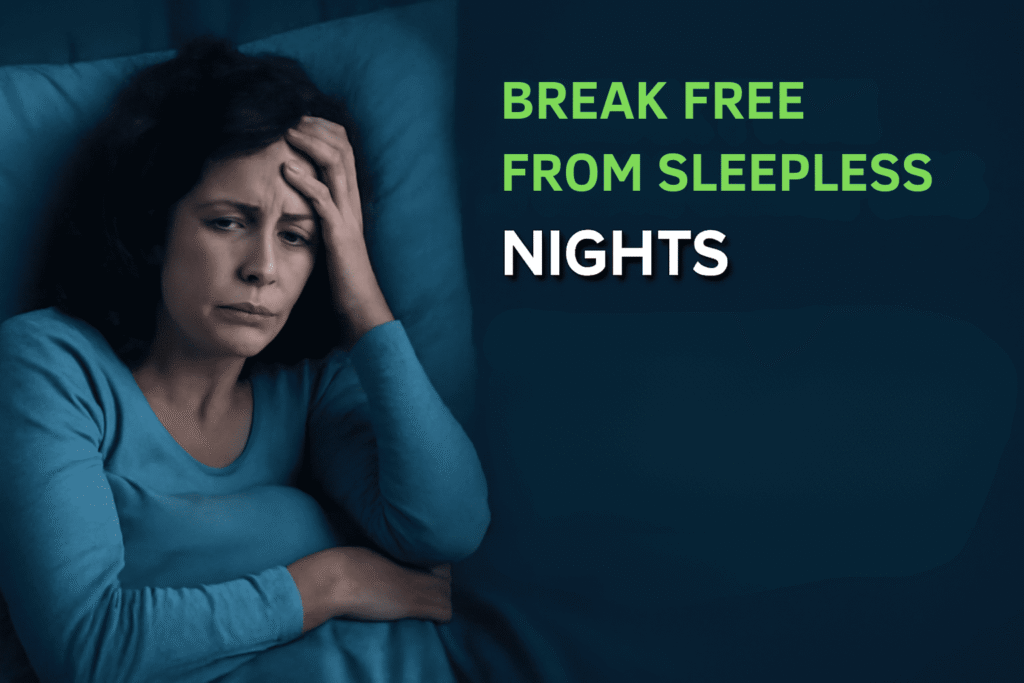Introduction to Digital Detox
Technology provides constant access and stimulation in the modern world, from social media to email. While digital connectivity has many benefits, excessive-tech use can also become overwhelming. This has given rise to “digital detox” – taking intentional breaks from screen time to restore balance and focus.
A digital detox involves limiting or avoiding digital technology and devices for some time. The primary goal is to reduce stress, increase productivity, and practice mindfulness in an increasingly tech-dependent society. Reasons people do digital detox include:
- Reducing overwhelm and burnout from constant emails, notifications, etc.
- Minimizing distractions and regaining the ability to focus
- Getting better sleep and feeling more rested
- Feeling less anxious and more present
- Improving genuine world relationships and social connections
- Engaging in more meaningful activities and self-care
Digital detoxe provide space to disconnect and recharge. They allow time for reflection and activities that do not involve screens. Even short tech breaks can relieve stress. More extended detoxes give a more profound mental focus and creative energy renewal.
Statistics on Tech Overuse
Technology has become deeply ingrained in our daily lives. Studies show that the average person spends over 4 hours on their smartphone alone daily. When you add in the time spent using computers, tablets, gaming devices, and watching television, the figure is closer to 10 hours per day for the average adult. Teenagers may spend over 9 hours daily consuming media.

This constant stimulation and screen time has consequences. High technology usage has been linked with decreased attention spans, inability to focus, high-stress levels, and sleep disturbances. One study found a 67% increase in suicide risk among teens who spend five or more hours per day on their devices. Anxiety and depression are often exacerbated by excessive use of technology and social media. The overstimulation of being “plugged in” negatively impacts mental health. Regular breaks can counteract these effects and allow time for mind relaxation. A digital detox provides an opportunity to disconnect and rediscover balance.
Reasons for Doing a Detox
In today’s digital age, many people recognize the need to break from constant connectivity. Excessive technology use has been linked to several issues that negatively impact mental and physical health. Here are some of the top reasons people are turning to digital detox:
Information Overload and Burnout
The sheer amount of information available online can quickly lead to overload. Emails, notifications, social media, and unlimited content compete for our attention. This can result in burnout as the mind becomes fatigued. A digital detox provides much-needed relief for the brain. Unplugging allows you to focus without distractions and constant multitasking.
Poor Sleep, Lack of Focus and Concentration

Studies show that overuse of tech can disrupt standard sleep patterns. The blue light emitted from screens can interfere with the body’s production of melatonin, a hormone that regulates our sleep-wake cycle. Devices also stimulate the mind, making it difficult to unwind at night. A digital detox can help improve sleep quality. It’s also easier to regain focus and concentration during work or study without distractions.
Comparison and FOMO from Social Media
Social media often leads to feelings of inadequacy and anxiety as people compare their lives to carefully curated highlights of others. The fear of missing out (FOMO) can also develop as we compulsively check apps and social feeds. Detoxing from social platforms allows you to connect with your needs and desires again without comparing or worrying about what you might be missing online.
Different Types of Digital Detoxes
There are a few principal approaches people take when doing a digital detox:
Going completely offline
Some people decide to go entirely offline for a set period during their detox. This could mean leaving your smartphone and laptop home for a weekend getaway in nature. Or it might involve turning off your devices at night and not going online again until the following day. The idea here is to separate yourself from technology entirely so you can take a substantial break from digital stimulation. This approach works best if you can devote specific chunks of time where disconnecting fully won’t impact other parts of your life.
Limiting use to certain times/activities
Rather than cutting out technology altogether, you can create boundaries for when and how you use devices. For example, limit yourself to checking your phone twice daily, such as after breakfast and before bed. Or you could restrict technology use to only certain activities where it’s essential, like navigating with GPS when driving or taking photos at special events. Just be sure to stick to the boundaries you set.
Taking breaks from specific sites and apps
If eliminating all technology seems too hard, start by identifying the sites and apps that tend to suck up all your time and attention. Common culprits include social media, email, news sites, YouTube, and other sources of endless scrolling. You can detox by taking a break from just one site or app you overuse. For example, you might take a month off from Facebook. Or you could delete distracting apps from your phone for a week. This approach helps reset your habits around specific technologies that decrease productivity or well-being.
Setting Boundaries and Rules
An essential part of a successful digital detox is setting clear boundaries and rules around technology use. This establishes healthy habits and reduces mindless scrolling and distraction.
One strategy is to establish tech-free times where you intentionally avoid screens. This could include set mealtimes, at least 30 minutes before bed, family time in the evenings, and other consistent daily windows. Setting phone-free pockets of time and sticking to them trains your brain to focus on the offline world. It removes the temptation and habit of constantly checking devices. Planning tech-free times may be more sustainable than completely unplugging for long stretches.
Another critical rule is removing apps and notifications that lead to distraction. Social media apps with constant notifications can hijack attention. Consider deleting or at least logging out of apps that seem to suck you in without much benefit. Disable unnecessary notifications so your devices aren’t constantly vying for your attention. Triage which apps you need access to throughout your day and limit usage of those that distract more than add value.
Establishing device-free zones can also be helpful. Keep phones out of your bedroom for better sleep hygiene. Make mealtimes phone-free zones for more mindful eating and quality time with those around you. Set up tech-free areas in your home to encourage conversations, reading, or hobbies that don’t involve screens.
Setting these types of boundaries and limitations puts you back in control of your technology use. The rules help break compulsive habits of checking your phone, scrolling endlessly, and multitasking across devices.
Taking a Social Media Cleanse
Going on a social media cleanse has become a popular digital detox. This involves taking a temporary break from social media platforms like Facebook, Instagram, and others.
Many people find that social apps are one of the biggest distractions and time-wasters regarding technology overuse. The constant notifications and endless scrolls put social sites in a battle for our attention. This can negatively impact productivity and lead to wasted time online.
Taking a social media hiatus for a few days or weeks can help reset your habits. You may automatically reach for your phone less when the apps are not there, tempting you.
A straightforward way to start a social cleanse is by deleting apps from your smartphone. This creates an extra step of redownloading the apps to access the sites. Out of sight, out of mind.
If you find yourself redownloading the apps out of habit, try putting your phone in a drawer for set times throughout the day. This physical barrier makes the apps harder to access mindlessly.
You can also temporarily deactivate your social media accounts during the cleanse period. This provides a more robust separation since you cannot access the sites from your devices.
The key is identifying where social media wastes your time or negatively impacts your mental health. Then, set rules and boundaries around use that improve your relationship with technology.
Digital Detox Tips and Ideas
Taking a break from technology can open up free time for other activities. Here are some ideas to try during your digital detox:

Tech-free activities to enjoy
- Reading – Pick up that book you’ve wanted to read or visit your local library. Reading printed books and magazines uses a different part of your brain than screen reading.
- Writing – Journal your thoughts in a notebook, write letters to friends, or get creative with short stories. Writing things down solidifies memories.
- Exercising and moving – Go for a run, take a dance class, do yoga, lift weights, play a sport, or hike. Moving your body releases endorphins that boost your mood.
- Creative arts – Draw, paint, knit, sew, scrapbook, play an instrument, or make pottery. Tapping into your creativity provides a sense of satisfaction.
- Cooking and baking – Find new nourishing recipes and prepare them mindfully. Slow down and enjoy the smells and flavors.
- Socializing – Get together with friends for a meal, meet for coffee, schedule a game night, join a local club, or take an in-person class. Human connection fuels the soul.
- Being in nature – Spend time outdoors walking, swimming, stargazing, or quietly observing your surroundings. Nature has therapeutic benefits.
Using focus modes
Many devices now have “focus” or “do not disturb” modes. Use these to silence non-essential notifications during your digital detox: Disable app badges, sounds, and notifications from distracting apps. Schedule specific times each day or app limits.
Make your space more conducive.
Evaluate your environment and make changes to support your detox. Turn off Wi-Fi and put devices in airplane mode. Keep phones out of sight and reach, like in a separate room charging overnight. Adjust lighting to be calmer. Play soothing music. Have physical books, magazines, and writing supplies readily available. Create an inviting atmosphere for your tech-free time.
Benefits of Unplugging
Taking a break from technology provides both mental and physical renewal. When we’re constantly connected, our minds are in perpetual distraction. This can impair cognitive abilities over time. Unplugging gives our brains a chance to rest, restore, and refocus.
One of the most significant benefits of a digital detox is improved sleep quality. Using screens before bed makes it harder to fall and stay asleep. The blue light emitted from devices suppresses melatonin production. Limiting evening screen time allows our bodies to relax and prepare for rest. Studies show that restricting phone use can help people fall asleep faster and sleep more soundly through the night.
Detoxing from technology is also shown to reduce stress and anxiety levels. There is a correlation between high social media use and increased feelings of depression and loneliness. Taking a break can lift your mood and outlook. Without constant influxes of information and notifications, you experience less mental strain.
A digital detox boosts focus and productivity. When we’re continuously multitasking, it’s harder to concentrate on tasks meaningfully. Cutting out distractions sharpens your attention, improves memory, and enhances motivation. You can work more efficiently without emails, texts, or social media interruptions.
Unplugging also allows more presence and enjoyment of offline activities. We derive less pleasure from what we’re doing when constantly checking devices. Whether bonding with loved ones, exercising, being creative, or experiencing nature, disconnection immerses you. By avoiding the pull of technology, you can find greater satisfaction in life’s simple moments.
Developing a Healthier Relationship with Tech
While digital detox can provide renewal through temporary disconnection, maintaining healthy tech habits requires an ongoing mindset shift. Developing a healthier relationship with technology is just as crucial as unplugging.
This starts with being more mindful about how and when you use devices and apps. Check in with yourself periodically to evaluate whether your tech use adds value and alignment or wastes time and creates a distraction.
It’s also important to be selective about which technologies you engage with and which you may want to avoid or minimize. For example, passive scrolling through social media for hours likely provides less value than active communication through messaging apps. Streaming movies could be more mindless than reading an e-book.
Aim to use technology deliberately to enrich your life and relationships—Disable notifications from apps that lure you into distraction. Be present during meals and conversations without having your phone nearby. Learn to recognize when you’ve fallen into autopilot tech use versus intentional use.
By developing greater self-awareness around technology, you can take control of your digital habits. Be your gatekeeper regarding how and when devices access your time and attention. Don’t let tech unconsciously dominate your days. With some thoughtfulness, you can craft a wise and empowered relationship with the digital tools to serve you.
Achieving Balance and Moderation
In our technology-driven world, achieving balance and moderation in your relationship with digital devices is essential. While occasional digital detox can provide renewal, completely disconnecting may not be realistic or desirable for most people. The key is to develop healthier tech habits that allow you to thrive.
Small steps can make a difference on the path to balance. Turn off notifications, take regular tech-free breaks, and unplug during meals or before bed. Device-free activities like yoga, hiking, or reading can relieve stress and help you reconnect with the offline world.
Aim to be more mindful about how and when you use technology. Be selective about which devices and apps add value versus those that primarily waste time or cause distraction. Set boundaries and limit screen time to specific windows each day.
Balance is essential for prospering in our tech-saturated society. The goal isn’t to abandon technology altogether. It’s to foster a healthy relationship where tech improves life but doesn’t dominate it. Occasional digital detoxes can renew the mind and body. But lasting balance comes from thoughtful choices about integrating technology into your routines and activities. With moderation and wisdom, you can thrive in our digital world.
Conclusion
In summary, digital detox have emerged as an essential way to balance technology and other aspects of life. With increasing tech dependence, many people are experiencing burnout, distraction, lack of focus, poor sleep habits, and even depression. Disconnecting provides reprieve for the mind and promotes activities that truly replenish us.
While hardcore digital detox can provide renewal in the short term, they may need to be more sustainable and desirable for most people long-term. The key takeaway is that balance and moderation are essential. We must learn to develop intentional relationships with technology, where we control our device use instead of letting it control us.
Small, incremental steps can make a big difference in achieving healthy tech habits. Turn off notifications, take regular tech-free breaks, and unplug during meals or before bed. Schedule device-free activities that reduce stress and engage your mind meaningfully. The occasional full digital detox can provide a reset when you need it.
Above all, be mindful of how and when you use technology. Identify tools and apps that genuinely bring value rather than wasting time. Prioritize real-world connections and activities as well. With some forethought and discipline, we can thrive alongside technology instead of becoming slaves to it. The choice is ours.
Tips for Starting Your Digital Detox
Starting a digital detox requires some planning and preparation to make it successful. Here are some tips to help you get started:
How to Plan and Prepare
- Decide on your detox period. Will you unplug for a weekend, a week, or longer? Setting a specific window will help you stick to your goals.
- Establish rules and boundaries around phone/computer use. Will you avoid screens altogether or limit use to certain times of day? Determine any exceptions for things like work, emergencies, etc.
- Remove distracting apps and notifications from your devices. Turn off non-essential alerts to avoid temptations.
- Inform friends and family that you are doing a detox. Let them know you need help reaching out and making alternative contact plans.
- Make a list of activities to fill your newfound free time. Brainstorm screen-free hobbies, projects, and social activities.
Setting Your Period and Rules
When first starting, a short 24-48 hours detox can provide a reset without feeling too extreme. You can gradually increase your detox time as you get more comfortable disconnecting. Define your tech use rules clearly – when can you check devices, and for what purposes? Be disciplined yet realistic. If you need to access your computer for work, schedule those times specifically.
Informing Others
Give fair warning to people in your life that you’ll be hard to reach for a few days. Ask them to contact you in other ways, like by phone or text. Silence non-urgent notifications on your devices and set up an auto-reply on email stating you are unavailable. The more prepared people are, the fewer interruptions you’ll get that could derail your detox.
Alternative Activities
Have some go-to activities to fill your free time when not online. Great options include getting outdoors, exercising, reading books, doing home projects, spending time with people, taking up hobbies, or tackling your to-do list. Structure and planning will help replace mindless browsing with more fulfilling activities.
Handling Challenges and Obstacles
Taking a break from technology can be difficult, especially when it’s become integral to daily life. Here are some common challenges people face during a digital detox, along with tips for overcoming them:
Coping with boredom
One of the biggest obstacles when unplugging is boredom. People used to constant digital stimulation and entertainment may need those devices to fill their free time.
- Take an engaging hobby like learning a musical instrument, painting, gardening, or baking. Dive into an immersive activity that absorbs your focus.
- Make plans to socialize offline. Meet up with friends, play games, or engage in activities together. The human connection provides stimulation, too.
- Immerse yourself in a good book. Reading taps into the imagination and takes you to new places.
- Try meditation, yoga, or going for walks. These activities boost relaxation while occupying time.
Dealing with FOMO
Fear of missing out can kick in when you take a break from social media and online chatter. The constant stream of updates makes you feel left out.
- FOMO is often worse than reality. Remind yourself that social media presents highly curated versions of people’s lives.
- Stay busy with real-world activities and interactions to keep your mind occupied. Out of sight can mean out of mind.
- For close friends, let them know you’re taking a digital detox. They’ll understand if you need to be more responsive.
- Remember, nothing truly urgent happens via social media. You aren’t missing much by taking a short break.
Making exceptions when needed
A rigid digital detox may backfire if you feel stressed or isolated when needing to connect.
- Don’t deprive yourself of digital resources for emergencies, like using a map or calling a taxi.
- If anxiety kicks in, allow yourself limited tech time to ease the transition. Gradually increase your unplugged time.
- Have tech-free days interspersed with “lighter” detox days. This provides flexibility.
- If you need to reconnect temporarily, do so mindfully without getting sucked back into the habit.
The key is being flexible within reason. Allow some exceptions to avoid frustration and maintain balance. With practice, periodic digital detoxes will feel liberating rather than restrictive.
Maintaining Healthy Habits:
The hard work shouldn’t end once your detox period is over. To maintain your progress, it’s important to establish ongoing habits and routines that prevent you from slipping back into unhealthy tech use. Here are some ways to make your detox stick:
- Set designated tech-free times – Consistently unplug during meals, before bed, first thing in the morning, or any other times that work for your schedule. Mark these hours in your calendar and respect them.
- Remove triggers and temptation – Delete tempting apps from your devices and turn off unnecessary notifications to avoid mindless clicking and scrolling.
- Replace tech time with new activities – Have tech-free alternatives like reading, exercising, socializing, or learning a new hobby. Reach for these instead of defaulting to screens out of habit.
- Use apps to manage use – Utilize tools like Freedom, Forest, or AppDetox to block distracting sites and apps when you need to focus. Or try digital wellbeing settings on your devices.
- Involve others – Enlist your household, partner, or friends to help reinforce limits on tech use. Social support can strengthen new habits.
- Designate tech-free zones – Keep bedrooms, dinner tables, and other spaces screen-free to prevent gradual backsliding.
- Be mindful – Check in with yourself periodically about your tech use and its impact. Course correct if you notice unhealthy patterns resurfacing.
With consistency and commitment, your digital detox can transform into an ongoing lifestyle where you regain control over technology instead of vice versa. The habits you build will help you stay focused, present, and balanced.
Who Can Benefit Most from a Digital Detox?
Although digital detoxes can benefit most people, certain groups tend to overuse and need to rely more on technology. Taking a break may help restore balance and perspective.
Teens and Young Adults
Teens and young adults have grown up surrounded by technology. Many are “digital natives” who use smartphones, tablets, laptops, and gaming systems daily. While tech can enhance learning and connections, teens are at high risk for problematic internet use and video game addiction. Unplugging helps teens disengage from constant social media and limit harmful online behaviors like cyberbullying. Detoxing allows time for studying, exercising, and nurturing real-world relationships.
Parents and Professionals
Today’s parents and professionals juggle parenting with intense work demands. Many report feeling tethered to devices 24/7 for family communication, work emails, social media, etc. Disconnecting even temporarily can relieve stress and improve sleep quality and energy levels. It also allows quality family time that is free from endless multitasking between family, work, and screens.
Those Struggling with Distraction
Some individuals are more prone to compulsive behaviors and internet addiction. People who struggle with distraction and focus find digital detoxes renewing. Avoiding online rabbit holes and compulsive scrolling prevents wasted time and helps the brain regain attention. Unplugging may also curb smartphone addiction and habits like constantly checking devices.



